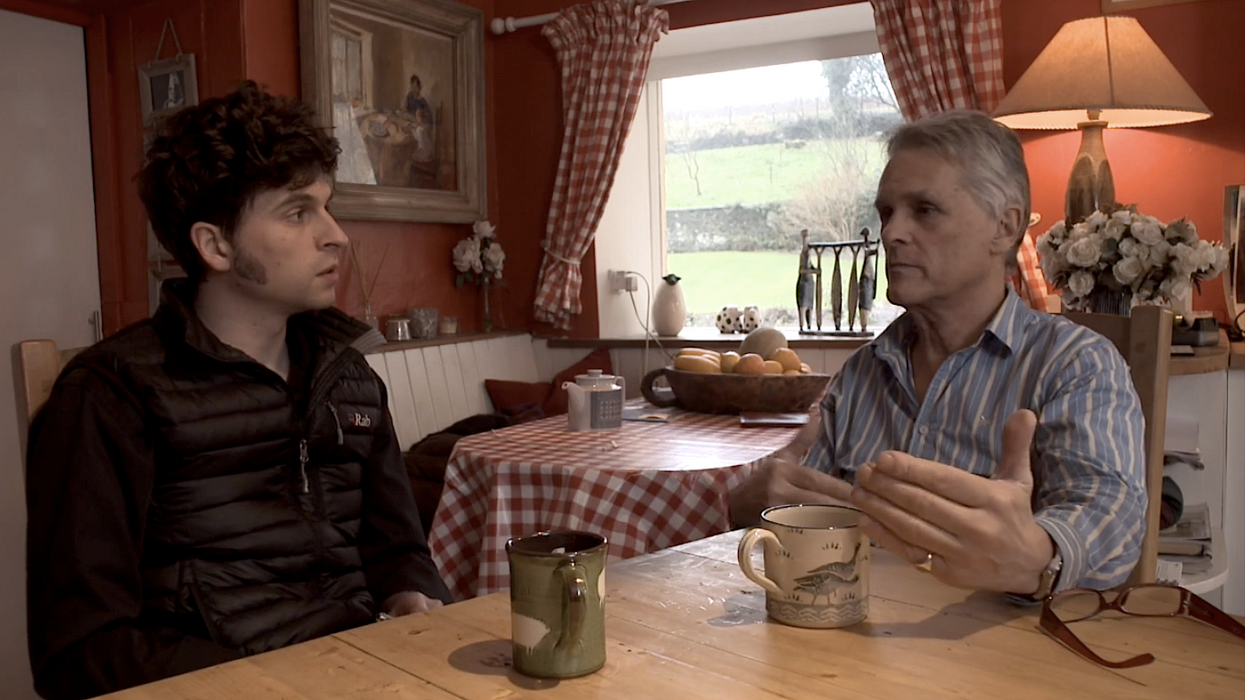Thoughts on Lighting & Shooting Interviews from a 40 Year Industry Veteran
Unless you work in narrative or commercial filmmaking, chances are that you're going to be shooting a whole lot of interviews.

Our good friend Billy Campbell, a working documentary filmmaker and creator of the Scorpion Light, is working on a series of lighting tutorials based on feedback from readers of this site. Recently, he's also put together another excellent educational resource for filmmakers, an interview and tutorial series with his father Douglas Campbell, a 40-year veteran of the film industry who has seen and done it all.
In the first installment, the pair talk about the process of conducting and lighting an interview, which is the bread and butter of filmmakers working in documentary, corporate, and some genres of television.
The key takeaway from this conversation is something that we've all heard before — content is king, and style is secondary. This concept is particularly crucial in an interview setting because you're likely to deal with a wide range of subjects, some of whom are seasoned pros and some of whom have never been in front of a camera in their lives and are very uncomfortable with it.
As Douglas mentions in the conversation, you can have the most brilliantly-staged interview setup with gorgeous, complex lighting and lovely shallow depth of field, but if the subject of the interview doesn't feel comfortable and can't deliver the content that you need, then it's all for naught. For that reason, the key tool that interviewers and technicians need to have in interview situations is empathy for the subject. I know that sounds kind of vague and non-utilitarian, but to have the ability to make your interview subject feel comfortable and safe will always provide you with the best content.
An Simple Interview Setup Using Natural Light
In their conversation, Billy and Douglas spend a good deal of time talking about how to harness natural light for interview shooting. Billy was kind enough to put together a quick and straightforward example of how to do this:
There are a few things to keep in mind when using natural light. First and foremost, natural light is not particularly reliable, particularly in situations where you're using it as a key light — and it's even less reliable when you need it for extended periods of time. For that reason, it's always a best practice to have a backup plan of some sort, and that usually means having additional lights with you, either to supplement or replace the natural light.
Second, windows with northern and southern exposure will usually provide the most consistent and softest light throughout the day, but that can make it difficult to bounce enough light to fill in the face of your subject, especially if you're shooting with a wider frame and can't get your bounce board or reflector close to the subject's face. There are a few ways around this. If you're intent on using natural light, you can set up another reflector outside of the window, and use it to bounce direct sunlight back inside, which you can then bounce again to light the subject. Conversely, you can also use an another light as a key while just using the natural light as a soft fill.
A Basic Lighting Setup for an OTS (Two Hander) Interview
Billy also put together another lighting scenario for us. This one is a bit more commonplace, both in documentary and narrative filmmaking. It's the basic OTS shot, or as Billy calls it, a dirty two hander (which sounds super kinky). Anyhow, this example exclusively uses Billy's product, the Scorpion Light, which is a tiny, powerful LED that can be modified easily and mounted just about anywhere.
We've got some helpful overheads to illustrate Billy's lighting setups in the original shot and in the reverse:


What are some of your tips for making interview subjects feel comfortable during an interview? How about your methods of utilizing natural light? Share down in the comments, and feel free to ask Billy any questions that you might have!
Source: Blind Spot Gear

 'Anora'Neon
'Anora'Neon Annie Johnson Kevin Scanlon
Annie Johnson Kevin Scanlon









